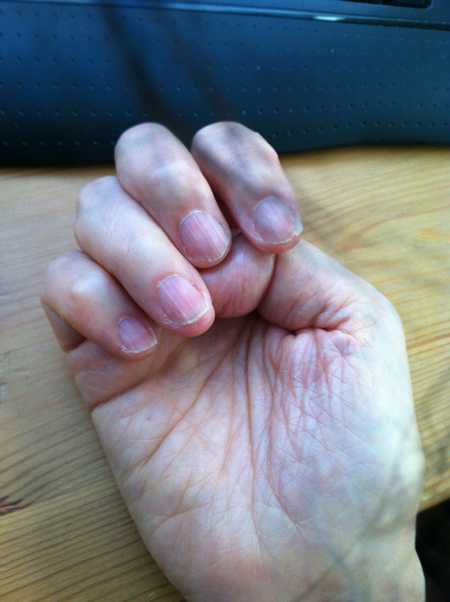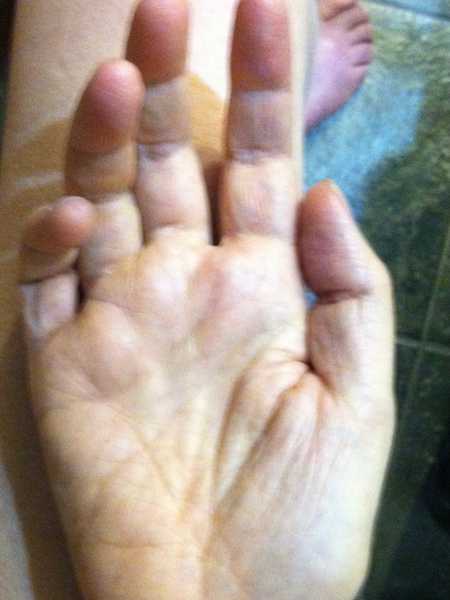Tips and Tricks for Improving Multiple Sclerosis

The Basics of NMES
Success using neuromuscular electrostimulation (NMES) to promote neuroplasticity begins with understanding how the technology interacts with your neurons and muscles.
Demyelination of the motor nerves due to MS compromises the ability of the nerves to excite muscle contractions. The NMES box applies external current to replace the current normally generated by a nervous system that, you know, works. Having limbs move while you are actively trying to move them, known in progressive MS land as nirvana (the state of being, not the band) helps promote neuroplasticity, a.k.a. helping your brain rewire itself. So now the question is how does the magic happen?
There are two ways we can use external electrical stimulation to cause muscular contraction:
- Directly by running the current through the muscle
- Indirectly by stimulating the nerve that excites the muscle
With all due respect to Mr. Galvani and his frog leg, stimulating the muscle directly by running direct current through it is not the best way for our purposes. Instead, most therapeutic NMES treatments focus on stimulating the nerve because it requires significantly less current and is more comfortable.
 Electrical circuits only work when they run in loops – current starts in the battery, runs around the circuit and returns to the battery. With NMES, the current makes a little side detour through part of your body. Specifically, the current goes through your skin into your nerve, through the muscle, out of the muscle, back to the skin and up the wire back into the box. Yep, we’re basically ignoring all of those stickers on your blow dryer cord that say don’t drop it into your bathwater because you’ll run current through your body. In this case, running current through your body is the point.
Electrical circuits only work when they run in loops – current starts in the battery, runs around the circuit and returns to the battery. With NMES, the current makes a little side detour through part of your body. Specifically, the current goes through your skin into your nerve, through the muscle, out of the muscle, back to the skin and up the wire back into the box. Yep, we’re basically ignoring all of those stickers on your blow dryer cord that say don’t drop it into your bathwater because you’ll run current through your body. In this case, running current through your body is the point.
The cord that runs from the box to your body is actually made up of two wires, one with a black terminal and one with a red terminal. You’ll attach adhesive electrodes to each of these wires. Current flows from the box down the wire to the black electrode. It stimulates the motor nerve just above the neuromuscular junction. The axon terminals of the nerve send out neurotransmitters that excite the individual bundles of muscle fibers. The red electrode gets placed over the belly of the muscle to attract the current and presto! the muscle contracts. Current flows from the muscle back up through your skin to reach the red electrode and travels from there back to the e-stim box. This general circuit is what causes the muscle to contract to move the body part, which in turn helps retrain the brain.
Now that we’ve talked about that, I’m going to confess that I just lied to you. The truth is that while the current in a battery-operated box could (and in some cases does) run in one direction (monophasic), in most home therapeutic boxes it actually flows first one direction, then the other, then back again, thousands of times per second (biphasic). So while monophasic current always flows from the black electrode to the red electrode, biphasic current flows from black to red, then red to black, then black to red, and so on. I’ll do a more technical explanation of this at some point but the Cliff’s-Notes version is that all that back-and-forth current flow is more comfortable for the user.
But that isn’t exactly how it works either. (Okay, fine, yes, that means I lied again, if you’re going to get all judgie about it). NMES boxes can run in either symmetric biphasic mode (often called large-muscle mode) or asymmetric biphasic mode (often called small-muscle mode). In symmetric mode, the current flows in each direction an equal amount of time (symmetrically), again making it more comfortable at high currents. In asymmetric mode, the current mostly flows from black to red (asymmetrically), although it does flow from red to black for a small percentage of the time, making it less comfortable.
Why do we care? Simple: although asymmetric biphasic mode does is a more effective job of exciting muscle fibers, it also creates a jabbing sensation at higher currents. The larger the muscle, the higher the amount of current you need to apply to excite the nerve and trigger a contraction. If you’re using symmetric (large muscle) mode, you can crank the box up to 50 or 60 mA without feeling anything except a muscle contraction. It’s not quite as targeted but trust me, it feels a lot better. For smaller muscles, where you need to be more precise, you can often get away with using 15 or 20 mA, so you can run in asymmetric (small muscle) mode and still be comfortable.
Why am I telling you all of this? Because the current mode you’re using has a bearing on where you put your electrodes. Remember what we said above about the black electrode going over the insertion point of the nerve while the red electrode goes over the belly of the muscle? That still holds for small muscle stimulation operating in asymmetric mode. For large muscle stimulation operating in symmetric mode, it doesn’t matter what color electrode goes where. You just need to have one of the electrodes over the insertion point of the nerve and the other electrode over the belly. (Okay, are you seriously going to call me out on that one, too?) Large muscles include the glutes, the quads, the abs, and the back muscles. Small muscles include the calves, feet, hands, and arms.
Okay, just to summarize:
- Most commercial NMES boxes use biphasic current (current that reverses direction at very high frequencies)
- Large-muscle mode (symmetric biphasic mode) spends an equal amount of time traveling each direction. That makes the stimulation more comfortable at the high current levels needed to activate muscles with high numbers of fibers like the glutes. Because the current flow is constantly reversing, it doesn’t matter where the red electrode is relative to the black electrode
- Small-muscle mode (asymmetric biphasic mode) still travels both directions but mostly in one direction (black electrode to red electrode). As a result, it’s important to keep to the convention of putting the black electrode over the insertion point in the red electrode over the belly of the muscle. Because small muscles have fewer fibers, they can be excited at lower current levels.
Current
In general, the higher the current, the stronger the muscle contraction. That said, more is not necessarily more. You only need to increase the current to a high enough level that you get strong muscle contraction. There’s no particular benefit to going beyond that level and you can potentially hurt yourself.
There are no hard and fast rules. In general, the larger the muscle, the greater the current level but that’s only general guidance. There is a relationship that helps clarify the dependencies. Want to know more? Okay, everybody stand back, we’re going to do SCIENCE!
Ready?
(ahem)
I = V/R
Ta-da! Yes, I know, exciting! Here, I’ll do it again, and in slow motion:
I = V / R
And now, with one hand behind my ba–
Okay, I sense I’m losing your interest so let’s go back to the fixing your brain part. Basically, what the equation says is that for constant voltage V, the amount of current that will get through your skin and tissues to activate the nerve is a function of the amount of resistance R (or impedance, if you want to be strict about it) that the current faces before reaching its destination. If you look at the equation (science!), the bigger R is, the smaller I becomes. So even if you turn up the current on your box superhigh, if you’ve got lot of resistance, it won’t do a good job of stimulating your muscle.
In this case, factors introducing resistance range from dry skin to dried out or old electrodes to greater amounts of subcutaneous fat between the electrode and the nerve. So, if you have a lot of resistance, it’s going to be harder for the electrical current to reach the nerve. You will need to turn up the zapper box much higher to get the same reaction. Fortunately, there are things you can do to improve matters:
- Make sure that your skin is exfoliated. You want it just like it is when you come out of the shower, flake free and moist (do not use lotion, though, because the oils will make your electrodes lose their stickiness).
- Make sure the electrodes are not dried out. Adhesive electrodes arrive at attached to plastic backing and encased in Ziploc bags. The directions on the packaging call for putting them on the backing and then sticking them back into the Ziploc after every use but seriously, who’s going to do that? Not yours truly, anyway. Instead, I dip my electrodes in a little dish of water every time I use them, and when I’m done with the session I do at least put them back on the plastic sleeve.
- Replace electrodes when they get old and lose their ability to contact. I write the month and date on electrodes every time I use a new set. I find that I can get a couple of months of use daily use (often multiple times a day) out of electrodes as long as I take care of them.
- Shave any hairy patches. Guys, that may mean that you have to do some manscaping. Tell people you’re training for the Tour de France.
Electrode Positioning
Electrodes should be at least ½ inch apart.
- The closer together they are, the more shallowly the current travels through your muscles.
- The farther apart the electrodes are, the more deeply the current penetrates.
Keep this in mind when you’re targeting muscles. If you’re targeting muscle close to the surface, like the tibialis anterior (front of calf) or the sartorius (strappy little muscle that you use to cross your legs) you want to put the electrodes close together. If you are trying to activate a muscle like the gluteus medialis, which is buried underneath the gluteus maximus, you need more distance between the electrodes. Occasionally when I am applying electrodes to my back muscles, I’ve gotten them far enough apart that they activate my abs, as well.
And now, I will leave you with a photo sequence showing the effect of daily sessions on my hand extensors. Left to its own devices, my right hand likes to clench into the Fist of Doom. Useful for beating villains but not for grabbing joysticks or light switches. Add a little NMES into the daily mix, though, and it gets much better:




Disclaimer
Hack My MS provides news and information only. It is an account of my own experiences and some techniques that have worked for me. It should not be construed as medical advice, nor is there any guarantee that any of these techniques will work for you. Always check with a medical professional before starting any exercise program, treatment, or medication. Do not discontinue any exercise program/medication/treatment or delay seeing a doctor as a result of anything you read on this site.

0 Comments